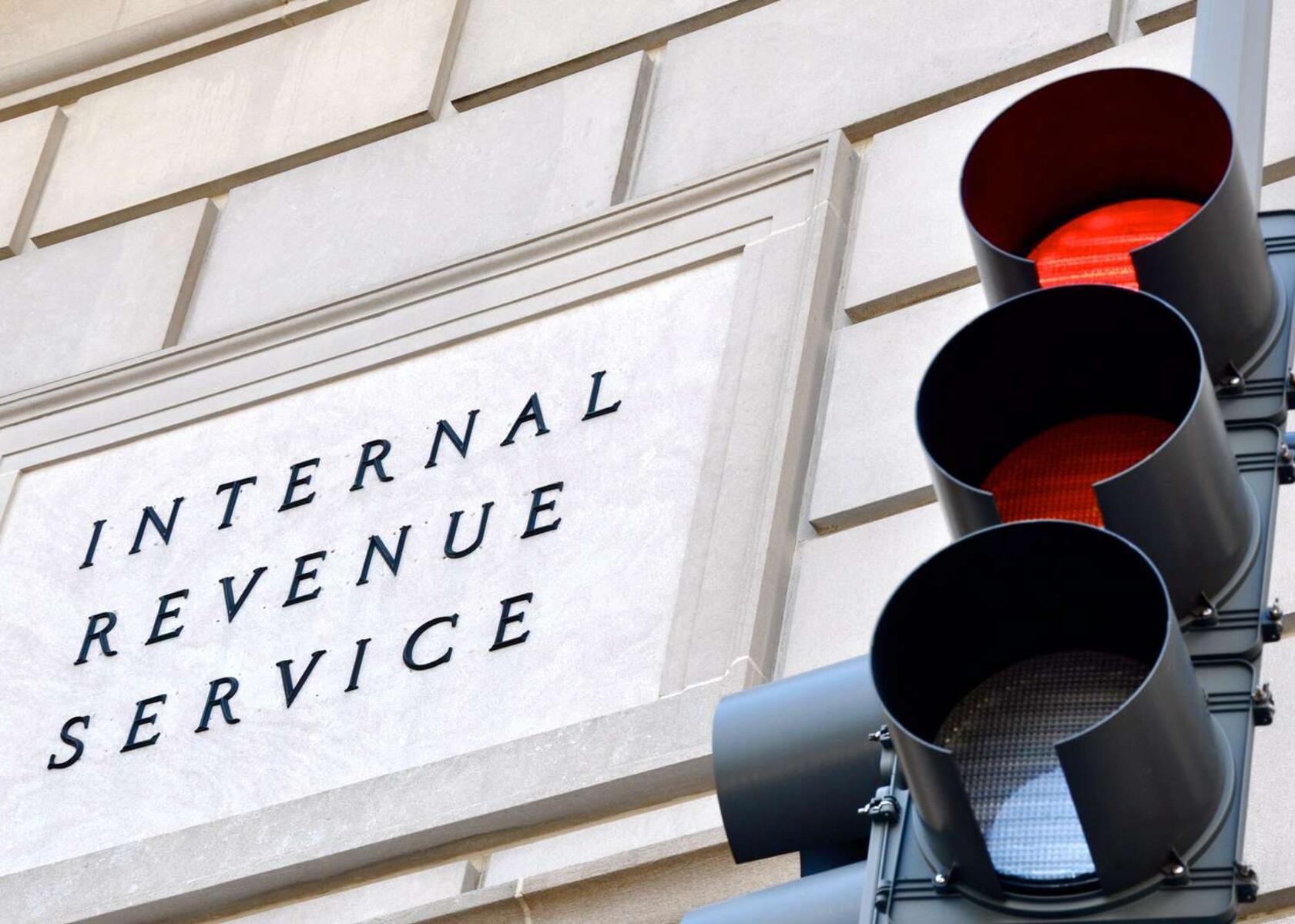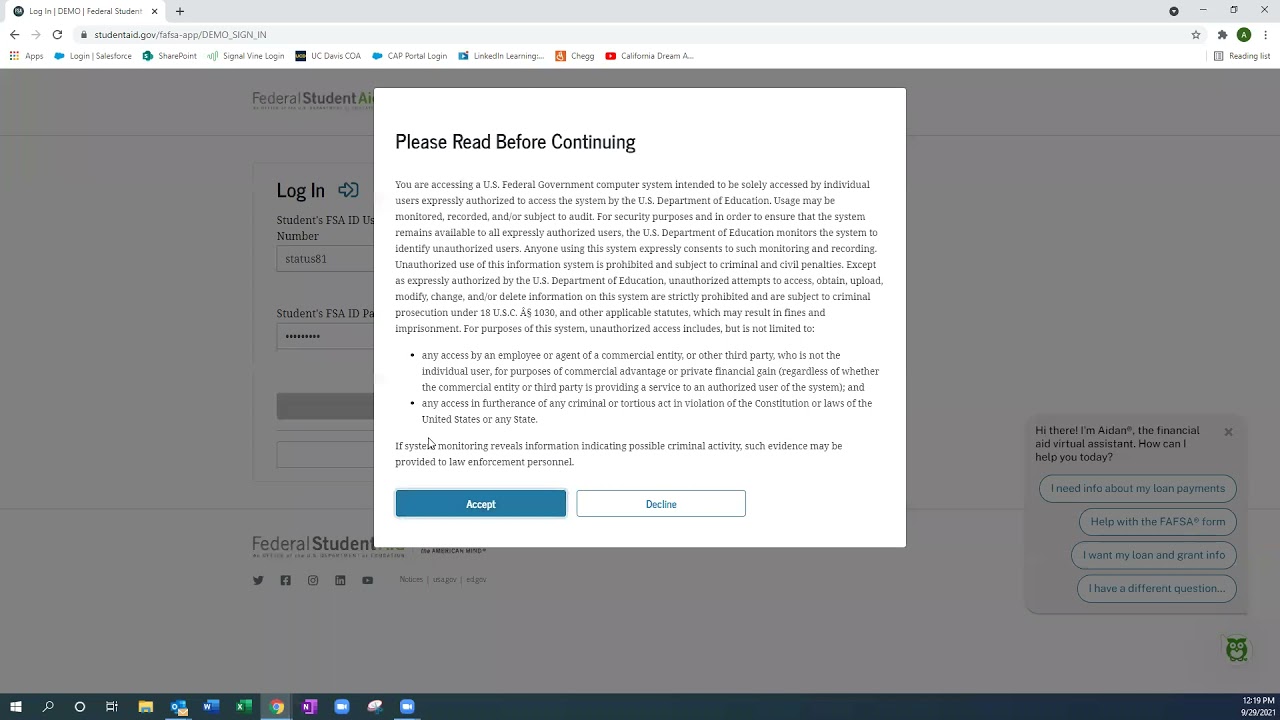Introduction
Welcome to the fascinating world of banking! As you dive into the realm of financial institutions, you may come across various terms and acronyms that seem unfamiliar. One such acronym that you may encounter is “SAR.” In the context of banking, SAR stands for Suspicious Activity Report.
A Suspicious Activity Report (SAR) is a document that financial institutions are required to file with the appropriate regulatory authorities, such as the Financial Crimes Enforcement Network (FinCEN) in the United States, when they suspect any unusual or suspicious transactions occurring within their institutions.
The purpose of the SAR is to help combat financial crime, including money laundering, terrorist financing, and other illicit activities. By reporting suspicious activities, banks and other financial institutions play a crucial role in safeguarding the integrity of the financial system and preventing criminals from exploiting it.
Financial institutions are obligated to file SARs under the legal framework set forth by regulatory bodies, such as the Bank Secrecy Act (BSA) in the United States. This framework outlines the responsibilities and requirements for reporting suspicious activities, ensuring consistency and coherence across financial institutions.
But who exactly is responsible for filing SARs? In most cases, it is the compliance department or the designated anti-money laundering (AML) officer within the financial institution. These individuals are trained to identify and assess suspicious activities, ensuring that the necessary reports are filed promptly and accurately.
It’s important to note that SARs contain specific information that aids in the investigation and analysis of the reported activities. These details may include the nature of the suspicious activity, the individuals or entities involved, the transaction amounts, and any supporting documentation or evidence.
To ensure confidentiality and protect the integrity of the reporting process, SARs are treated as highly confidential documents. Only authorized personnel and law enforcement agencies have access to this sensitive information. This confidentiality is crucial to encourage individuals within financial institutions to report suspicious activities without fear of reprisal or unauthorized disclosure.
Financial institutions have a legal obligation to ensure compliance with SAR reporting requirements. Failure to file SARs or deliberate non-compliance with reporting obligations can result in severe penalties, including monetary fines, license revocation, or even criminal charges.
In this article, we will delve deeper into the intricacies of Suspicious Activity Reports (SARs) in the banking industry. From the legal framework and reporting requirements to the confidentiality of SARs and potential penalties for non-compliance, we will provide you with a comprehensive understanding of this essential aspect of financial crime prevention.
Definition of SAR
A Suspicious Activity Report (SAR) is a document that financial institutions are required to file when they encounter any transactions or activities that raise suspicions of financial crime. These reports play a crucial role in identifying and preventing illicit activities such as money laundering, terrorist financing, fraud, and other forms of financial misconduct.
When a financial institution discovers any transaction or activity that deviates from the norm or appears suspicious, they are obligated to initiate the SAR filing process. This can include transactions that involve large amounts of money, inconsistent patterns, unexplained sources of funds, or transactions that do not match the customer’s known profile or business activities.
The purpose of filing a SAR is to alert regulatory bodies, such as the Financial Crimes Enforcement Network (FinCEN) in the United States, and other law enforcement agencies about potential financial crimes. By reporting suspicious activities, financial institutions help facilitate investigations and gather intelligence to combat financial fraud and protect the integrity of the global financial system.
It’s important to note that SARs are not direct evidence of criminal wrongdoing. Instead, they serve as a mechanism for reporting suspicions or concerns that require further investigation. Financial institutions act as intermediaries, providing authorities with the necessary information to determine whether further action, such as conducting an investigation or freezing assets, is required.
The threshold for filing a SAR varies depending on the jurisdiction and the specific regulations in place. In some jurisdictions, financial institutions have a duty to file SARs for all suspicious activities, regardless of the transaction amount, while in others, there may be a specific monetary threshold that triggers the filing requirement.
While the exact format of a SAR may vary across jurisdictions, they generally include essential details such as the nature of the suspicious activity, the individuals or entities involved, the transaction amounts, and any supporting documentation or evidence. This information allows regulators and law enforcement agencies to assess the reported activity and take appropriate action.
Financial institutions are typically required to file SARs within a specified timeframe after discovering the suspicious activity. The timeframe may vary depending on the severity of the suspicious activity and the regulations in place. Failing to file a SAR within the designated timeframe can result in penalties and regulatory consequences for the institution.
In the next sections, we will explore the purpose of SARs, the legal framework surrounding their filing, and the specific requirements and processes involved in reporting suspicious activities to regulatory bodies.
Purpose of SAR
The primary purpose of filing a Suspicious Activity Report (SAR) is to combat financial crime and protect the integrity of the global financial system. SARs play a crucial role in identifying and preventing illicit activities such as money laundering, terrorist financing, fraud, and other forms of financial misconduct.
By requiring financial institutions to report suspicious activities, regulatory bodies, such as the Financial Crimes Enforcement Network (FinCEN) in the United States, can gather valuable intelligence and initiate investigations to disrupt criminal networks, seize illicit funds, and prosecute individuals involved in financial crimes.
SARs serve as a mechanism for financial institutions to communicate their suspicions or concerns about certain transactions or activities to regulatory bodies and law enforcement agencies. These reports help authorities identify patterns, trends, and potential links between different individuals or entities engaged in illicit financial activities.
The timely reporting of suspicious activities through SARs enables regulatory bodies to monitor and analyze financial transactions more effectively. This, in turn, helps to identify emerging trends, modus operandi, and new forms of financial crime. Armed with this information, regulators can enhance their anti-money laundering (AML) measures, revise regulations, and develop strategies to stay ahead of criminals’ evolving tactics.
Moreover, SARs play a significant role in strengthening international cooperation among regulatory and law enforcement agencies. Financial institutions within different jurisdictions can submit SARs to their respective regulatory bodies, who can then share this information with other international counterparts. This collaboration enhances the global fight against financial crime, as it allows for the identification of cross-border criminal networks and facilitates the tracing and recovery of illicit funds.
Financial institutions themselves also benefit from filing SARs. Reporting suspicious activities not only helps mitigate the risk of being involved in illicit financial schemes but also safeguards their reputation and preserves the trust of their customers and stakeholders. By actively participating in the fight against financial crime, institutions demonstrate their commitment to ethical business practices and contribute to the overall stability and integrity of the financial system.
Ultimately, the purpose of SARs is to create a robust and vigilant financial ecosystem that can detect, deter, and disrupt financial crimes. By improving the identification and reporting of suspicious activities, SARs contribute to the broader mission of curbing illicit financial flows, reducing the funding of illegal activities, and protecting individuals and businesses from falling victim to financial fraud.
Legal Framework for SAR
The filing of Suspicious Activity Reports (SARs) is governed by a comprehensive legal framework established by regulatory bodies around the world. This framework sets forth the obligations, requirements, and procedures that financial institutions must follow when reporting suspicious activities.
In the United States, the primary legal framework for SARs is the Bank Secrecy Act (BSA) and the regulations issued by the Financial Crimes Enforcement Network (FinCEN), a bureau of the U.S. Department of the Treasury. The BSA requires financial institutions, including banks, credit unions, money services businesses, and other regulated entities, to establish robust anti-money laundering (AML) programs.
Under the BSA, financial institutions are required to implement policies, procedures, and internal controls to detect and prevent money laundering and other financial crimes. These institutions must have compliance officers or designated individuals responsible for monitoring and reporting suspicious activities.
Furthermore, the BSA mandates the filing of SARs in cases where financial institutions have a reason to suspect that a transaction or series of transactions are involved in, or attempt to facilitate, money laundering, terrorist financing, or other illegal activities. Failure to comply with the SAR reporting requirements can result in significant penalties, including hefty fines and criminal charges.
Outside of the United States, various jurisdictions have enacted their own legislation and regulations to combat financial crime and establish a legal framework for SARs. These regulations often align with international standards set by organizations such as the Financial Action Task Force (FATF).
In the European Union, for example, the Fourth Anti-Money Laundering Directive (AMLD4) and the recently updated Fifth Anti-Money Laundering Directive (AMLD5) provide the legislative framework for SAR reporting. These directives require financial institutions to identify and assess suspicious transactions and report them to the relevant national financial intelligence units (FIUs).
Similarly, countries such as Canada, Australia, the United Kingdom, and many others have enacted legislation that mandates the reporting of suspicious activities and the filing of SARs by financial institutions. These laws typically outline the obligations for internal reporting, the requirements for submitting SARs to the appropriate regulatory bodies, and the legal protections afforded to reporting entities.
The legal framework for SARs is continuously evolving as regulatory bodies adapt to address new and emerging threats in the financial world. This adaptability allows for a proactive approach to combat financial crime and ensures that financial institutions and their employees stay up-to-date with their reporting obligations.
Financial institutions must stay compliant with the legal framework for SARs by regularly reviewing and updating their policies and procedures, conducting appropriate staff training, and maintaining robust internal controls. By fulfilling their reporting obligations, financial institutions contribute to a collective effort to safeguard the global financial system and maintain trust in the integrity of the banking industry.
Who Files SARs
Within financial institutions, the responsibility of filing Suspicious Activity Reports (SARs) generally falls to the compliance department or the designated anti-money laundering (AML) officer. These individuals are trained and knowledgeable in identifying suspicious activities and have a clear understanding of the reporting requirements and processes.
Financial institutions, including banks, credit unions, money services businesses, and other regulated entities, appoint compliance officers or AML officers to oversee the implementation and enforcement of anti-money laundering measures. These officers are responsible for monitoring transactions, detecting and assessing suspicious activities, and ensuring the timely filing of SARs.
Compliance officers or AML officers work closely with frontline staff, such as tellers, relationship managers, and customer service representatives, who are often the first line of defense in identifying potential suspicious activities. Frontline staff members receive training on recognizing red flags and indicators of suspicious transactions, enabling them to escalate any concerns to the compliance department or the designated AML officer.
Not only are compliance officers responsible for initiating the SAR filing process, but they are also accountable for reviewing the accuracy and completeness of the submitted reports. They must ensure that all relevant information and supporting documentation are included in the SARs to assist regulatory authorities and law enforcement agencies in their investigations.
In some cases, financial institutions may outsource their AML compliance functions to external entities or engage third-party vendors specializing in AML services. These external parties act on behalf of the financial institution and carry out the necessary tasks, including identifying suspicious activities and filing SARs, in compliance with regulatory requirements.
It’s worth noting that the responsibility for SAR filing extends beyond compliance officers and AML officers. All employees within financial institutions have a duty to report suspicious activities to the designated department or officer. This culture of awareness and vigilance ensures that potential risks and suspicious activities are identified and escalated appropriately.
In certain jurisdictions, other professionals may also have a legal obligation to file SARs. For instance, lawyers, accountants, and real estate agents may be required to file SARs if they become aware of suspicious activities during the course of their professional services. These professionals are considered “gatekeepers” in the fight against financial crime and are expected to contribute to the reporting efforts.
Regulatory bodies and law enforcement agencies recognize the importance of collaboration between financial institutions and external stakeholders in reporting suspicious activities. By involving various parties in the filing of SARs, the detection and prevention of financial crimes are enhanced, ultimately contributing to a safer and more secure financial system.
Requirements for Filing SARs
When it comes to filing Suspicious Activity Reports (SARs), financial institutions must adhere to specific requirements outlined by regulatory bodies. These requirements ensure that the SARs contain relevant and accurate information, enabling regulatory authorities and law enforcement agencies to conduct effective investigations into potential financial crimes.
One of the key requirements for filing SARs is the identification and assessment of suspicious activities. Financial institutions must establish AML programs and implement internal controls that enable them to monitor and detect transactions that raise suspicions. This includes setting up systems and processes to identify red flags and indicators of potential money laundering, terrorist financing, or other illicit activities.
Financial institutions must also establish “know your customer” (KYC) procedures to collect and verify customer information, such as identification documents, source of funds, and business relationships. Maintaining accurate and up-to-date customer records is crucial for assessing the legitimacy of transactions and identifying any unusual or inconsistent patterns.
Once a suspicious activity is identified, financial institutions must promptly initiate the SAR filing process. The timeframe for filing SARs may vary depending on the jurisdiction and the severity of the suspicious activity. Typically, financial institutions must file SARs within a specified period after becoming aware of the suspicious activity.
In addition to timely filing, SARs must also meet specific reporting requirements. Financial institutions must provide detailed and accurate information in the reports, including the nature of the suspicious activity, the individuals or entities involved, the transaction amounts, and any supporting documentation or evidence available.
Financial institutions should strive to provide as much relevant information as possible within the SARs. This includes providing transactional details, such as the date, time, and location of the transactions, as well as any additional information that may be useful to investigators, such as the purpose of the transaction or any known affiliations of the parties involved.
Another important requirement is the confidentiality of SARs. Financial institutions must ensure that SARs are treated as highly confidential documents. Only authorized personnel within the institution, as well as relevant regulatory bodies and law enforcement agencies, should have access to this sensitive information. Confidentiality is crucial to encourage the reporting of suspicious activities without fear of unauthorized disclosure or retaliation.
Financial institutions must also maintain appropriate record-keeping procedures for SARs. These records should be retained for a specific period, as required by regulatory bodies, and should be easily accessible for review and audit purposes. Maintaining proper records ensures transparency and accountability in the SAR reporting process.
Lastly, financial institutions should provide ongoing training and education to their employees regarding the identification, reporting, and filing of SARs. This ensures that all staff members are aware of their responsibilities and are equipped with the necessary knowledge and skills to fulfill their obligations effectively.
By adhering to these requirements for filing SARs, financial institutions contribute to the collective efforts in combating financial crimes, helping to protect the integrity of the financial system and safeguard the interests of customers and stakeholders.
Information Included in a SAR
When filing a Suspicious Activity Report (SAR), financial institutions are required to provide specific information that is crucial for regulatory authorities and law enforcement agencies to assess and investigate potential financial crimes. These details help in understanding the nature of the suspicious activity and identifying the individuals or entities involved.
Here are the key pieces of information typically included in a SAR:
- Description of Suspicious Activity: Financial institutions should provide a clear and concise description of the suspicious activity observed. This may include details about the nature of the activity, any unusual or inconsistent transaction patterns, or any indicators that raise suspicions.
- Individuals or Entities Involved: The SAR should identify the individuals or entities directly involved in the suspicious activity. This includes providing the names, addresses, contact information, and any known account numbers or identifiers associated with the parties involved.
- Transaction Details: Financial institutions should include comprehensive information about the transactions that raise suspicions. This includes the date and time of the transactions, the type of transactions (such as cash deposits, wire transfers, or other forms of payments), and the amounts involved in each transaction. Additional details, such as the origin or destination of the funds, may also be included.
- Supporting Documentation: SARs should include any supporting documentation or evidence that substantiates the suspicions and enhances the understanding of the reported activity. This can include copies of relevant transaction documents, records of communication, and any additional information that assists in the investigation.
- Customer Information: Financial institutions should provide relevant customer information, such as customer names, identification numbers, addresses, and any known business activities. This helps in determining the profile, history, and potential risk associated with the customer involved in the suspicious activity.
- Contextual Information: Contextual information can be valuable in understanding the circumstances surrounding the suspicious activity. This may include the purpose of the transaction, any known affiliations or relationships between the parties involved, or any specific red flags or indicators that prompted the institution to report the activity.
It is essential for financial institutions to ensure the accuracy and completeness of the information provided in a SAR. Filing incomplete or inaccurate reports may hinder the effectiveness of investigations and compromise the overall anti-money laundering efforts.
By including all necessary information, financial institutions assist regulatory authorities and law enforcement agencies in their analysis and response to potential financial crimes. Timely and accurate reporting of suspicious activities through SARs contributes to the collective effort in combatting money laundering, terrorist financing, fraud, and other illicit activities.
Process for Filing a SAR
The process for filing a Suspicious Activity Report (SAR) involves several steps that financial institutions must follow to report and document suspicious activities effectively. This process ensures that regulatory authorities and law enforcement agencies receive the necessary information to investigate potential financial crimes. Here are the key steps involved:
- Identification of Suspicious Activity: The first step in the process is identifying a transaction or activity that raises suspicions. This can be done through the monitoring of financial transactions, account activities, or customer behavior patterns. Financial institutions use various tools, such as anti-money laundering (AML) software, to help flag unusual or suspicious activities.
- Internal Investigation and Assessment: Once a suspicious activity is identified, financial institutions conduct an internal investigation to gather additional information and assess the legitimacy of the activity. This may involve reviewing customer profiles, transaction history, supporting documents, and any available evidence.
- Documentation and Record Keeping: Financial institutions must ensure that all relevant information pertaining to the suspicious activity is properly documented and recorded. This includes details such as transaction amounts, dates, individuals or entities involved, and any supporting documentation or evidence. Accurate and thorough record keeping is crucial for SAR reporting and future reference.
- Internal Reporting and Escalation: The identified suspicious activity is then reported internally to the compliance department or the designated anti-money laundering (AML) officer. Frontline employees may escalate the concerns to the appropriate channels, ensuring that all relevant information is communicated to the necessary personnel responsible for SAR filing.
- SAR Preparation: The compliance department or AML officer prepares the SAR by gathering and organizing all the necessary information and documentation related to the suspicious activity. This includes providing a clear and concise description of the suspicious activity, identifying the individuals or entities involved, and providing transaction details and any supporting evidence.
- Timely Submission: Once the SAR is prepared, financial institutions must ensure timely submission to the appropriate regulatory authority or law enforcement agency. The specific reporting procedures and channels may vary depending on the jurisdiction and the regulatory requirements in place. Financial institutions must adhere to the designated timeframe for filing SARs.
- Follow-Up and Cooperation: Throughout the process, financial institutions may receive follow-up inquiries or requests for additional information from regulatory authorities or law enforcement agencies. It is crucial for institutions to cooperate and provide timely responses, ensuring effective collaboration in the investigation and analysis of reported suspicious activities.
Financial institutions should establish robust systems and processes to facilitate the SAR filing process. This includes implementing reliable monitoring systems, conducting regular training for employees on identifying and reporting suspicious activities, and maintaining secure record-keeping procedures.
By diligently following the process for filing SARs, financial institutions contribute to the prevention and detection of financial crimes, helping to safeguard the integrity of the financial system and protect individuals and businesses from falling victim to illicit activities.
Confidentiality of SARs
The confidentiality of Suspicious Activity Reports (SARs) is of utmost importance in the battle against financial crimes. This level of confidentiality is vital to encourage the reporting of suspicious activities by financial institutions and to protect the integrity of the investigation process. Here are key aspects of the confidentiality of SARs:
Limited Access: SARs are treated as highly confidential documents, and access to them is restricted to authorized personnel within the reporting financial institution. Only employees with a legitimate need to know, such as compliance officers, designated AML officers, and relevant management personnel, are granted access to SARs. Access restrictions enhance the security and integrity of the reporting process.
Regulatory and Law Enforcement Access: While SARs are kept confidential within the financial institution, regulatory authorities, and law enforcement agencies, such as the Financial Crimes Enforcement Network (FinCEN) in the United States, have the legal authority to access SARs. These entities require access to the reports for investigative and intelligence gathering purposes. However, information sharing is governed by strict protocols and safeguards to ensure confidentiality is maintained.
Protected by Law: SARs are generally protected by law, and disclosing or sharing them without proper authorization is illegal. This legal protection helps ensure that individuals and institutions feel safe in reporting suspicious activities without fear of unauthorized disclosure or retaliation. Strict penalties and sanctions are imposed on anyone found to have violated the confidentiality of SARs.
Confidence in Reporting: Confidentiality of SARs promotes confidence among reporting financial institutions. Institutions are more likely to report suspicious activities when they have assurance that their reports are treated with the highest level of confidentiality. This confidence is crucial for maintaining trust between regulatory bodies and institutions and encourages open communication and collaboration in combating financial crimes.
Protection against Reprisal: Financial institutions and employees reporting SARs need protection against any form of retaliation or legal consequences for their reporting actions. Confidentiality safeguards play a vital role in mitigating the risk of reprisals, ensuring that individuals feel secure in reporting suspicious activities without fear of negative repercussions.
Sharing Confidential Information: In cases where multiple financial institutions are involved in an investigation or where cross-border cooperation is required, limited sharing of SAR-related information may be necessary. However, such sharing is governed by strict protocols and agreements, ensuring that confidentiality is maintained during the exchange of information.
Retention and Destruction: SARs and related records are typically retained for a specified period, as required by regulatory bodies. Once the retention period expires, financial institutions must adhere to proper protocols for the destruction and disposal of SAR-related documents to prevent any potential unauthorized access or data breaches.
Financial institutions and the individuals involved in the reporting process must understand the importance and significance of maintaining the confidentiality of SARs. By upholding the strictest standards of confidentiality, regulatory bodies, law enforcement agencies, and financial institutions can effectively collaborate in the fight against financial crimes, protecting the integrity of the financial system and ensuring a robust reporting culture.
Reporting Requirements for SARs
Reporting Suspicious Activity Reports (SARs) involves complying with specific requirements set forth by regulatory bodies. These requirements ensure that SARs are filed accurately, in a timely manner, and with all the necessary information to aid in the investigation and analysis of potential financial crimes. Here are the key reporting requirements for SARs:
Timely Reporting: Financial institutions are mandated to file SARs within a designated timeframe after becoming aware of suspicious activity. The specific timeframe varies depending on jurisdiction and severity of the suspicious activity. Prompt reporting ensures that regulatory authorities and law enforcement agencies can take timely action to mitigate risks and investigate potentially illegal transactions.
Complete and Accurate Information: SARs must include comprehensive and accurate information about the suspicious activity observed. This includes detailing the nature of the activity, the individuals or entities involved, transaction details, and any supporting documentation or evidence. Providing complete and accurate information allows regulatory authorities and law enforcement agencies to conduct effective analysis and investigations.
Standard Reporting Format: Many regulatory bodies provide specific reporting forms and templates for filing SARs. Financial institutions must use the prescribed format and structure provided by the relevant authority. Adhering to the standard reporting format ensures consistency and facilitates efficient processing and analysis of SARs.
Submit Only Reportable SARs: Financial institutions must file SARs only for transactions or activities that meet the reporting threshold set by regulatory authorities. Each jurisdiction has its own guidelines for what constitutes reportable suspicious activity. Financial institutions must carefully evaluate and ensure that the identified suspicious activity meets the criteria before submitting a SAR.
Proper SAR Documentation: Financial institutions must maintain proper documentation and records of SARs they file. This includes record-keeping of the SARs themselves, supporting documents, and any correspondence related to the filing process. Proper documentation facilitates internal and external audits, enables review of past SARs, and ensures compliance with regulatory requirements.
Internal Reporting and Escalation: Financial institutions must establish internal reporting mechanisms to ensure that suspicions of suspicious activities are promptly escalated to the designated personnel responsible for SAR filing. Frontline employees should be trained to recognize and report suspicious activities, facilitating the reporting process in a timely manner.
Consistent Training and Education: Financial institutions should provide regular training and education to employees involved in the SAR reporting process. This includes training on identifying red flags and indicators of potential financial crimes, maintaining awareness of updated regulatory requirements, and understanding the significance of accurate and timely SAR reporting.
Collaboration with Regulatory Authorities and Law Enforcement: Financial institutions must cooperate with regulatory authorities and law enforcement agencies during SAR investigations. This includes providing any requested additional information, supporting documents, or clarifications promptly. Collaboration ensures effective analysis, investigation, and potential prosecution of suspicious activities.
Adhering to these reporting requirements for SARs enables financial institutions to fulfill their obligations in combating financial crimes and staying compliant with the regulatory framework. It contributes to the overall efforts to protect the integrity of the financial system, foster transparency, and mitigate risks associated with illicit activities.
Penalties for Non-Compliance with SAR Requirements
The filing of Suspicious Activity Reports (SARs) is a legal requirement imposed on financial institutions to combat financial crimes. Non-compliance with SAR requirements can lead to severe penalties and consequences. Regulatory bodies are empowered to impose these penalties to ensure that financial institutions adhere to their reporting obligations. Here are the potential penalties for non-compliance:
Monetary Fines: Financial institutions that fail to comply with SAR requirements may face significant monetary fines. These fines can vary in amount depending on the jurisdiction, severity of the non-compliance, and the enforcement policies of the regulatory body. Fines can range from a few thousand to millions of dollars, impacting the institution’s bottom line.
License Revocation: In some cases, non-compliance with SAR requirements can result in the revocation of a financial institution’s license. This severe consequence can effectively shut down the institution or restrict its operations, imposing significant financial and reputational loss.
Regulatory Action: Non-compliance with SAR requirements may trigger regulatory actions against financial institutions. These actions can include increased scrutiny, enhanced supervisory measures, and imposition of corrective actions. Regulatory bodies may impose special audits to ensure compliance or appoint external consultants to investigate and rectify deficiencies within the institution.
Reputation Damage: Failure to comply with SAR requirements can tarnish the reputation of a financial institution. Negative media coverage and public perception of non-compliance with anti-money laundering measures can erode customer trust and confidence. This can lead to erosion of market share, loss of customers, and damage to the institution’s long-term viability.
Lawsuits and Legal Consequences: Non-compliance with SAR requirements can expose financial institutions to legal consequences. These consequences can include lawsuits from regulatory bodies, class-action suits from affected parties, or criminal charges. Legal proceedings can result in further financial penalties, imprisonment of responsible individuals, or both.
Heightened Regulatory Scrutiny: Financial institutions that demonstrate a pattern of non-compliance with SAR requirements may face heightened regulatory scrutiny in the future. Regulatory bodies may subject these institutions to more frequent inspections, audits, and reporting requirements. This increased scrutiny can impose additional costs and administrative burdens on the institution.
Loss of Correspondent Banking Relationships: Non-compliance with SAR requirements can result in the loss of correspondent banking relationships. Correspondent banks, especially those operating in jurisdictions with strong regulatory frameworks, may sever ties with a non-compliant institution to protect their own reputations and avoid any potential exposure to money laundering or financial crime risks.
Regulatory Reporting Requirements: Financial institutions that have been found non-compliant with SAR requirements may be subject to additional reporting requirements to enhance oversight and monitoring by regulatory bodies. These additional reporting obligations can be time-consuming and require substantial resources to fulfill.
It is crucial for financial institutions to prioritize compliance with SAR requirements to mitigate the risk of these penalties. By maintaining robust internal controls, providing ongoing training to employees, and regularly reviewing and updating AML policies and procedures, institutions can ensure they meet their reporting obligations and avoid severe consequences.
Conclusion
The filing of Suspicious Activity Reports (SARs) is a critical component in the fight against financial crimes such as money laundering, terrorist financing, and fraud. Financial institutions play a crucial role in detecting and reporting suspicious activities, aiding regulatory bodies and law enforcement agencies in their efforts to maintain the integrity of the global financial system.
SARs serve as a mechanism for financial institutions to report suspicions or concerns about potential financial crimes. They provide valuable information and intelligence that can help identify patterns, trends, and potential links between individuals or entities engaged in illicit activities. By reporting suspicious activities, financial institutions contribute to the prevention and disruption of financial crimes, protecting individuals and businesses from falling victim to fraud or illicit schemes.
Adhering to the legal framework and reporting requirements for SARs is crucial for financial institutions. Compliance with these requirements ensures accurate and timely reporting, as well as the protection of sensitive information. It also helps maintain regulatory compliance, safeguards the institution’s reputation, and fosters trust among regulators, customers, and stakeholders.
Confidentiality of SARs is of utmost importance to encourage reporting and protect individuals and institutions involved. Financial institutions must ensure that SARs are treated as highly confidential documents, available only to authorized personnel and regulatory bodies. This confidentiality assures reporting entities that their identities and the information they provide will be safeguarded, encouraging a culture of reporting and cooperation.
Non-compliance with SAR requirements can result in severe penalties and consequences, including monetary fines, license revocation, regulatory actions, reputational damage, and legal ramifications. Financial institutions must prioritize compliance with SAR requirements to mitigate the risk of these penalties and ensure the integrity of their operations.
In conclusion, the filing of Suspicious Activity Reports is a vital tool in the fight against financial crimes. Financial institutions, regulatory bodies, and law enforcement agencies must work together to maintain a robust reporting system, timely investigation, and prosecution of financial crimes. By adhering to the legal framework, following reporting requirements, and prioritizing confidentiality, financial institutions contribute to a safe and secure financial system, protecting the interests of individuals, businesses, and global economies.

























